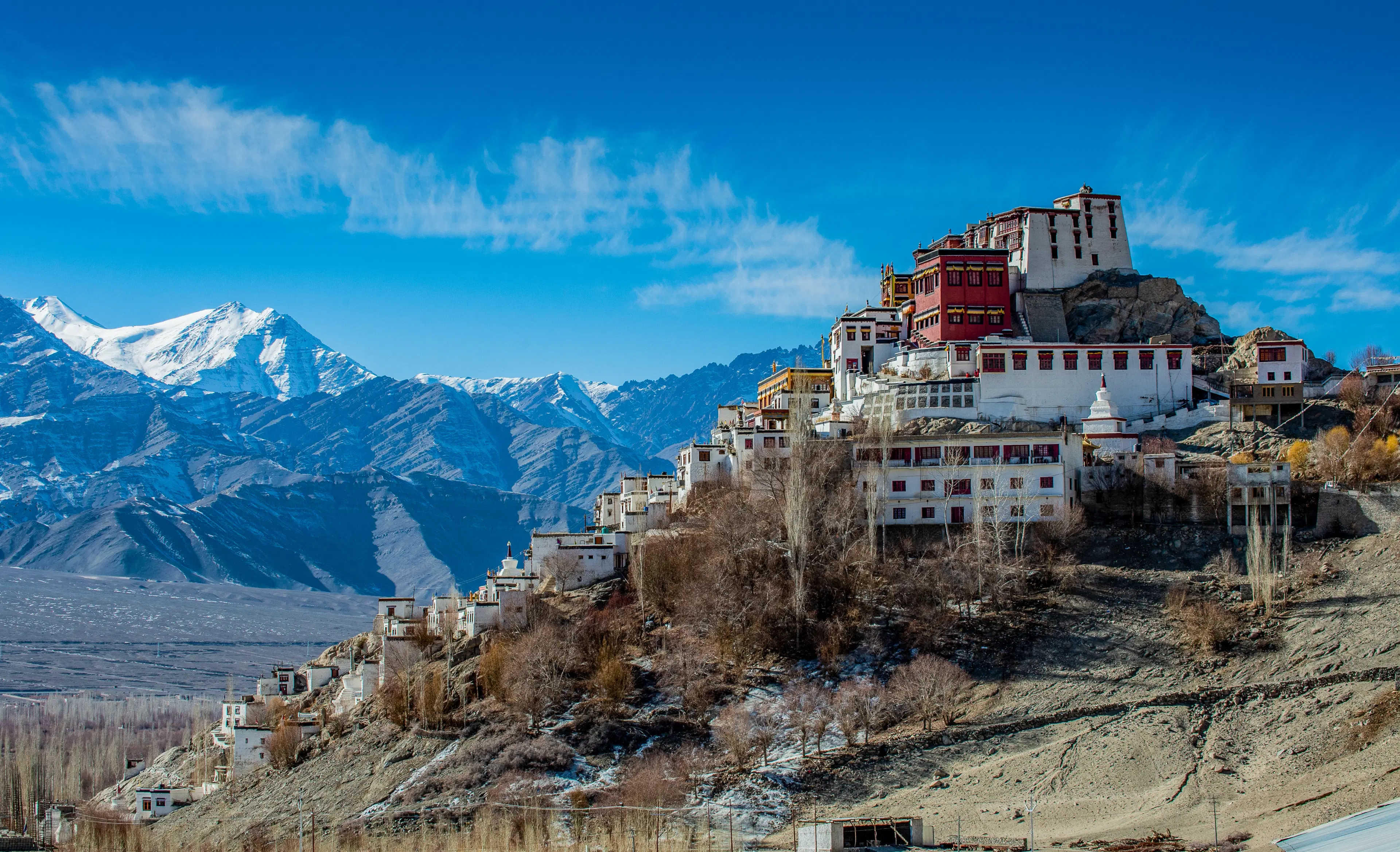
Hotels
•04 min read

India is home to some of the most breathtaking high-altitude lakes in the world. Nestled amidst the majestic Himalayan ranges, these natural wonders are a magnet for adventurers, nature lovers, and curious minds alike. This article answers your FAQs about the highest altitude lake in India, while offering insights into other scenic and remote lakes. By reading, you will learn about what defines a high-altitude lake, the unique features of India's alpine lakes, and the cultural as well as ecological significance of these glacial gems. Let us journey together into a world where pristine waters meet rugged peaks.
A high-altitude lake sits at an elevation far above sea level. Many of these lakes are found in alpine regions. They typically have glacial origins. Such lakes enjoy clear, cold waters and pristine surroundings. Their isolated nature enhances their ecological significance and helps preserve unique biodiversity. The environment around these lakes is delicate, making them true natural treasures.
India's high-altitude lakes have a distinct charm. Nestled in the Himalayan mountain ranges, these lakes are fed by glaciers and are known for their crystal-clear waters. The pristine surroundings and traditional beliefs add to their magic. Many local communities attach cultural importance to these lakes. Their unique blend of natural beauty and spiritual significance sets them apart as some of the most alluring scenic lakes in India.
The answer is Gurudongmar Lake. Located in Sikkim, it is the highest lake in India at approximately 17,800 feet above sea level. Gurudongmar Lake boasts a glacial origin. Its waters shimmer under the high-altitude sun and it holds a special place in local lore. The lake is both a natural marvel and a sacred destination, celebrated by Buddhists and Hindus alike.
India is abundant with remarkable alpine lakes. Pangong Tso charms visitors with its vast, mirror-like surface. Tso Moriri captivates with its serene beauty and remote location. Tsomgo Lake is treasured for its easy accessibility and vibrant scenery. These lake destinations add depth to the palette of Indian alpine lakes. In addition, other natural lakes in India like those in the Ladakh region continue to inspire adventurous souls worldwide.
Did You Know?
Gurudongmar Lake is one of the few high-altitude lakes in the world that remains partially frozen even in summer. This is due to its extreme elevation and close proximity to glaciers.

Gurudongmar Lake is situated in Sikkim, near the Indo-China border. The journey to this lake is as mesmerizing as the destination itself. Visitors can reach the lake by following popular trekking routes or using road access, though the routes can be challenging. The experience offers a blend of scenic beauty and a sense of accomplishment. The region is dotted with notable landmarks that add context and direction for travelers.
The lake holds deep cultural and spiritual meaning for locals. It is revered by both Buddhists and Hindus. Many believe that the lake waters are blessed and hold healing powers. The legends and folklore associated with Gurudongmar reflect centuries of tradition and respect. For pilgrims and travelers, the lake is not just a destination; it is an experience that nurtures both body and spirit.
The ideal months to visit are from April to June and September to November. During these seasons, the weather is moderate and the skies are clear. As a result, the views are stunning and the natural colors of the landscape are vivid. Travelers planning trekking to high-altitude lakes benefit from lesser crowds and more serene surroundings during these times. It is wise to check local weather conditions before planning the trip to ensure a safe and enriching experience.
Gurudongmar Lake in Sikkim stands as the highest altitude lake in India, at around 17,800 feet above sea level.
In India, Gurudongmar Lake holds that title. Around the globe, similar high reaches include Nepal’s mountain lakes.

Gurudongmar Lake is known for its high-altitude location in India. It is a must-visit for adventure lovers and those who appreciate natural beauty.
Yes, trekking is popular to reach high-altitude lakes such as Gurudongmar, Tso Moriri, and Chandratal. These treks offer stunning vistas and thrilling experiences.
Other noteworthy lakes include Pangong Tso, Tso Moriri, Roopkund Lake, and Tsomgo Lake. Each of these showcases unique landscapes and remarkable cultural hints.
The ecosystems around these alpine lakes are fragile yet fascinating. The waters support rare flora and fauna that have adapted to extreme conditions. Conservation of these natural habitats is vital. Protecting these lakes is crucial for preserving biodiversity and the heritage of Himalayan mountain lakes.
Trekking among these lakes is an adventure like no other. High-altitude treks allow travelers to explore vast, unspoiled landscapes. Many trails go through rocky paths and grassy slopes. Every step on these treks brings you closer to nature. Maintaining safety is key. It is wise to be well-prepared and follow guidelines. Proper gear and knowledge of high-altitude conditions help ensure an enjoyable journey. These experiences remind us why remote lakes in India are so captivating.
India's high-altitude lakes are not just geographical marvels but also cultural and ecological treasures. Gurudongmar Lake, the highest lake in India, stands as a vivid example of the breathtaking beauty and diversity of the Himalayan region. These alpine lakes, from the one in Sikkim to others scattered across the landscape, continue to inspire explorers and nature enthusiasts alike. With every visit, travelers gain a deeper respect for natural wonders and the delicate balance that sustains these magical areas.